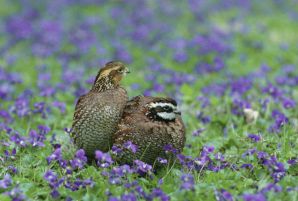Landowners interested in bobwhite quail populations are familiar with common quail habitat improvement practices. However, many overlook the management or conversion of exotic grass pastures. The control of non-native pasture grasses is highly recommended for persons wanting to manage for bobwhite quail. So what can you do to help quail on your property?
Herbicides, unfortunately, provide the only effective method for the control of exotic grasses. Complete removal of non-native grasses is desired for providing the best possible quail habitat, but often times this may be impossible to achieve. Depending on the situation, the best approach may be to selectively treat the worst spots on a periodic basis to maintain the majority of the site in a useable condition for quail.

Although landowners interested in wildlife management often choose to avoid the use of chemicals, herbicides are completely necessary in these instances. The choice of chemicals to use varies by the type of vegetation present and other site conditions. For specific recommendations and other quail management recommendations, make sure you contact your local wildlife biologist or county extension specialist.
Quail eat plant and weed seeds and consume a variety of insects. The species is representative of a community of wildlife that requires early successional habitats. Removing non-native grasses eliminates harmful plants and provides improved habitat because, fortunately, bobwhite quail prefer habitats that have recently been disturbed. The resulting plant community should include native grasses and legumes, a wide variety of broadleaf plants, annual weeds, and brushy cover, all closely interspersed across the immediate area, as well as property.
Planting will be required to establish native plants following the chemical removal of exotic grasses. Planting native grasses for quail is one of the best ways to jump start good quail habitat. Include other management practices on the disturbed area and the surrounding area, as well. In addition, establish quail covey headquarters for loafing/resting areas. The key to good quail habitat is diversity – natural diversity!